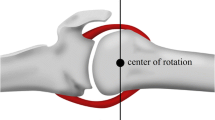Abstract
The purpose of this paper is to review scientific evidence that graft tension affects remodelling of the autograft in ligament reconstruction. The in situ freezing model of the patellar tendon, an ideal patellar tendon autograft model, demonstrated that subsequent cellular proliferation following fibroblast necrosis reduces the mechanical properties of the autograft. Stress shielding enhances reduction of the strength in the once-frozen patellar tendon. The strength of the patellar tendon also changes depending on the degree of stress shielding. Transmission electron micrographs revealed that the number of small-diameter fibrils decreases in the stress-shielded tendons compared with non-stress-shielded tendons after in situ freezing. Restressing essentially restores the mechanical properties of patellar tendon autografts even if the strength has been much reduced by complete stress shielding. The effects of restressing may depend on the period of stress shielding applied before restressing. Unphysiologically high tension significantly reduces the mechanical properties of the in situ frozen anterior cruciate ligament (ACL). Therefore, not only stress-deprivation but also stress-enhancement significantly affect the mechanical properties of tendon autografts. Results of in vivo and in vitro studies suggest that cyclic tensile loading may inhibit the deterioration in mechanical strength of the transplanted tendon. Clinically, our prospective randomized study demonstrated that a relatively high initial tension reduces the postoperative anterior laxity of the knee joint after ACL reconstruction using the doubled autogenous hamstring tendons connected in series with polyester tapes, when the tension applied is less than 80 N. Our experimental and clinical results indicate that the initial tension is one of the significant factors that affect the results of ACL reconstruction, although the optimal initial tension for the other graft materials still remains unknown.
Similar content being viewed by others
Author information
Authors and Affiliations
Rights and permissions
About this article
Cite this article
Tohyama, H., Yasuda, K. Significance of graft tension in anterior cruciate ligament reconstruction Basic background and clinical outcome. Knee Surgery 6 (Suppl 1), S30–S37 (1998). https://doi.org/10.1007/s001670050220
Issue Date:
DOI: https://doi.org/10.1007/s001670050220




